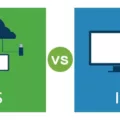Encryption protocols are used to protect data and communication networks from unauthorized access. They can be used to protect sensitive information such as financial details, medical records, and confidential communications. Encryption protocols are also essential for secure online shopping, banking, and communication between two or more computers.
Encryption protocols work by scrambling data into an unreadable code before it is sent across a network. This code can then only be decrypted by the person who has the key to unlock it. This helps to ensure that outsiders cannot access the data and that only authorized users can view the contents of the data.
There are four main types of encryption protocols: Advanced Encryption Standard (AES), Triple DES, Blowfish, and Rivest-Shamir-Adleman (RSA). AES is one of the most secure encryption methods used by governments and security organizations to protect classified communications. It uses symmetric key encryption where a single key is used to both encrypt and decrypt data.
Triple DES (3DES) is a more secure version of DES that uses three different keys in order to encrypt and decrypt data. Blowfish is another symmetric key algorithm that uses a variable length key up to 448 bits in length for added security. Finally, RSA is an asymmetric encryption protocol that uses two different keys; one public key which anyone can use to encrypt messages, and one private key which is kept secret by its owner in order to decrypt them.
No matter which type of encryption protocol you choose, it’s important that you use strong passwords with your encryption keys in order to maximize the security of your data transmissions over networks. It’s also important that you regularly update your software programs so they stay up-to-date with any new security patches or updates released by the developers. By taking these steps you’ll help ensure your data remains safe from malicious attacks or breaches from outside sources.

Types of Encryption Protocols
The two main types of encryption protocols are symmetric encryption and asymmetric encryption. Symmetric encryption (also known as private key encryption) uses a single key to both encrypt and decrypt data. This type of encryption is typically faster than asymmetric encryption, but it requires the sender and receiver to share the key, making it less secure.
Asymmetric encryption (also known as public key cryptography) uses two keys: a public key for encrypting data and a private key for decrypting it. This type of encryption is more secure because the public key can be shared without compromising security, but it is slower than symmetric encryption.
Types of Encryption Systems
The four basic types of encryption systems are Advanced Encryption Standard (AES), Triple DES, Blowfish, and Rivest-Shamir-Adleman (RSA). AES is a symmetric key encryption system, which means that the same key is used for both encryption and decryption. It can use a 128-bit, 192-bit, or 256-bit key length depending on the level of security required. Triple DES is another symmetric key system but uses the Data Encryption Standard with three different keys to increase security. Blowfish is a symmetric block cipher that uses a variable length key from 32 bits to 448 bits. Finally, RSA is an asymmetric encryption system that uses two different keys—a public key for encryption and a private key for decryption.
The Most Secure Encryption Protocol
The most secure encryption protocol is Advanced Encryption Standard (AES). AES is a symmetric key encryption protocol that is used by governments, security organizations, and businesses for their most sensitive communications. AES uses a single key that both the sender and receiver must possess to encode and decode the data. This means that only authorized individuals can read the encrypted data. AES offers multiple levels of encryption strength from 128-bit up to 256-bit, with higher levels offering increased security. Additionally, AES offers high-speed performance for encrypting large amounts of data quickly and efficiently.
Types of Modern Encryption
Modern encryption can be divided into three main categories: symmetric encryption, asymmetric encryption, and hashing.
Symmetric encryption is the oldest type of encryption and uses the same key to both encrypt and decrypt data. This makes it incredibly secure but requires you to share the key with everyone who needs access to the data. Examples of symmetric encryption include AES (Advanced Encryption Standard) and DES (Data Encryption Standard).
Asymmetric encryption, also called public-key cryptography, uses two different keys for both encrypting and decrypting data. The keys are kept secret from one another and can only be used in combination with each other. This makes it much more secure than symmetric encryption because no one else can decrypt your data unless they have both keys. Examples of asymmetric encryption include RSA (Rivest–Shamir–Adleman) and ECC (Elliptic Curve Cryptography).
Finally, hashing is a type of cryptographic method that generates a unique code based on a given piece of data. It cannot be used to decrypt data, but it can be used to verify that a file hasn’t been changed since it was hashed. Popular hashing algorithms include SHA-1 (Secure Hash Algorithm 1) and MD5 (Message Digest 5).
Differences Between RSA and AES
RSA and AES are both cryptographic algorithms used to encrypt data. RSA is an asymmetric algorithm, meaning it uses two keys: a public key for encryption and a private key for decryption. AES, on the other hand, is a symmetric algorithm, which means it uses the same key for both encryption and decryption. RSA is much more computationally intensive than AES, making it significantly slower. It’s typically used to encrypt only small amounts of data due to its slower performance. In contrast, AES is much faster and can be used to encrypt larger amounts of information. Both RSA and AES are secure algorithms; however, due to their faster speed and ability to encrypt larger amounts of data, AES is the preferred choice for most applications.
Protocols Utilizing AES Encryption
Secure file transfer protocols like FTPS, HTTPS, SFTP, AS2, WebDAV, and OFTP all use AES (Advanced Encryption Standard) to encrypt data. AES is a symmetric encryption algorithm that uses the same key for both the encryption and decryption of data. It is widely used by organizations and individuals to protect sensitive information such as passwords, credit card numbers, and financial documents. It is also used in various communication protocols such as SSL/TLS to ensure secure communication over the internet. AES is an accepted encryption standard by the US government and is used worldwide to protect data stored on computers or transmitted over networks.
The Three Major Components of an Encryption System
The three major components of an encryption system are the key generation algorithm, the encryption algorithm, and the decryption algorithm. The key generation algorithm is responsible for generating a unique encryption key from a user-provided password or another secret. This key is then used by the encryption and decryption algorithms to encrypt and decrypt data. The encryption algorithm takes plaintext as an input and outputs a ciphertext using the generated key. Finally, the decryption algorithm reverses the process by taking in ciphertext with the same key and returning plaintext.
Types of Cryptographic Algorithms
Cryptographic algorithms are used to protect data by transforming it into an unreadable format, known as ciphertext. There are three main types of cryptographic algorithms approved by the National Institute of Standards and Technology (NIST): hash functions, symmetric-key algorithms, and asymmetric-key algorithms.
Hash functions are used to create a unique digital fingerprint for any given set of data. They essentially compress the data into a fixed-length value using a mathematical algorithm. This value is then used to verify the integrity of the original data since any change in the original data will be reflected in the resulting hash value.
Symmetric-key algorithms use a single shared key for both encryption and decryption operations. This key is kept secret from everyone apart from those who need to send or receive secure information. Examples include Advanced Encryption Standard (AES) and Data Encryption Standard (DES).
Asymmetric-key algorithms use two separate keys – one public key that can be shared openly with anyone, and one private key that must remain confidential with its owner. The public and private keys work together to encrypt and decrypt messages sent between two parties, ensuring that only intended recipients can read them. Examples include Rivest–Shamir–Adleman (RSA) and Elliptic Curve Cryptography (ECC).
The Most Widely Used Encryption Method and Its Popularity
Public key encryption is the most widely used type of encryption because it provides a stronger level of security than other methods. Public key encryption utilizes two different keys, one for encrypting data and another for decrypting data. This means that if someone obtains one of the keys, they will still need to possess the other to decrypt data. Furthermore, public key encryption does not require any distribution of keys which makes it more secure than other methods.
Public key encryption is also much faster than private key encryption and can be used in many applications such as digital signatures and secure communications. Additionally, public key encryption can be used for authentication purposes, allowing users to verify the identity of another user without having to exchange any secrets beforehand. This makes public key encryption an ideal method for securing online transactions and communication over insecure networks.
Which Cryptographic Algorithm is More Secure: RSA or AES?
RSA and AES are both secure encryption methods, but they have different strengths and weaknesses. RSA is an asymmetric encryption algorithm, which means that it uses two keys, a public key to encrypt data and a private key to decrypt it. Public keys can be freely distributed, which makes RSA ideal for securely sharing information with multiple parties. However, it is vulnerable to certain attacks, and the longer the key length, the more secure the encryption will be.
On the other hand, AES is a symmetric encryption algorithm that uses a single key for both encryption and decryption. This makes AES faster than RSA but also more vulnerable to brute-force attacks. However, AES has been validated by FIPS (Federal Information Processing Standard) 140-2 and is considered one of the most secure encryption algorithms available today. In addition, AES can use keys up to 256 bits long which greatly increases its security level compared to RSA’s smaller keys.
Overall, AES is generally considered more secure than RSA due to its higher security level and speed of operation. While both methods provide excellent security when used correctly, AES should be chosen if maximum security is desired over speed or compatibility with other systems.
Comparing the Security of AES and SHA
When it comes to security, AES and SHA are two completely different algorithms. AES is a symmetric-key encryption algorithm, which means the same key is used for both encryption and decryption. This makes it more secure as the key is only known by the sender and receiver. On the other hand, SHA is a hashing algorithm that is used to verify that data has not been altered or corrupted. It is not an encryption algorithm and so cannot be used to encrypt data.
In comparison, AES is generally considered more secure than SHA because of its ability to encrypt data while SHA can only verify its integrity. However, this does not mean that SHA is less secure than AES; it just serves a different purpose. Both algorithms are important for ensuring data security but should be used in different ways according to their respective functions.
The Current Use of AES Encryption
Yes, AES encryption is still used today and is widely considered one of the best encryption algorithms available. It is employed by a variety of organizations and individuals to protect communications, data, and information from unauthorized access. AES can be used with key lengths of 128-bit, 192-bit, and 256-bit for maximum security. In addition to being secure, AES is also relatively fast, making it an attractive option for encrypting large amounts of data. For these reasons, AES remains a popular choice for protecting sensitive information.
The Most Unbreakable Encryption
The most unbreakable encryption system is the one-time pad, which is theoretically impossible to break. The one-time pad works by using a key that is as long as the message is encrypted and is completely random, meaning it cannot be guessed or worked out by an attacker. The key is used once only, so even if an attacker managed to get hold of it they would not be able to use it again. This makes the one-time pad incredibly secure and virtually unbreakable. However, the major downside of this system is that it requires both sides of a conversation to securely share a key in advance, which can be difficult in practice.
Protocols Utilizing Advanced Encryption
The three protocols that can use advanced encryption are Transport Layer Security (TLS), Secure Sockets Layer (SSL), and Internet Protocol Security (IPSec). TLS is a cryptographic protocol used to secure communications between two endpoints. It provides confidentiality, integrity, and authentication of data transmitted over the network. SSL is a protocol that allows for secure communication over the Internet by creating an encrypted tunnel between two computers. IPSec is a suite of protocols used to secure IP-based communications, providing authentication, integrity, and confidentiality. All three of these protocols can use advanced encryption standards such as AES-128, AES-192, and AES-256 to add extra layers of security to protect data in transit over the network.
Conclusion
In conclusion, encryption protocols are essential in the modern world due to the need for secure data transmissions and data storage. While there are many different types of encryption available, the four basic types are Advanced Encryption Standard (AES), Triple DES, Blowfish, and Rivest-Shamir-Adleman (RSA). Symmetric encryption is the most commonly used method, which uses a single key both to encrypt and decrypt data. Asymmetric encryption, also known as public key encryption, is another popular option and involves two keys – one for encoding and one for decoding. Finally, hashing is a method that creates a unique signature or “hash” from a set of data that can be used to verify its authenticity. Ultimately, understanding these three methods will help you make an informed decision when it comes to protecting your confidential data.








